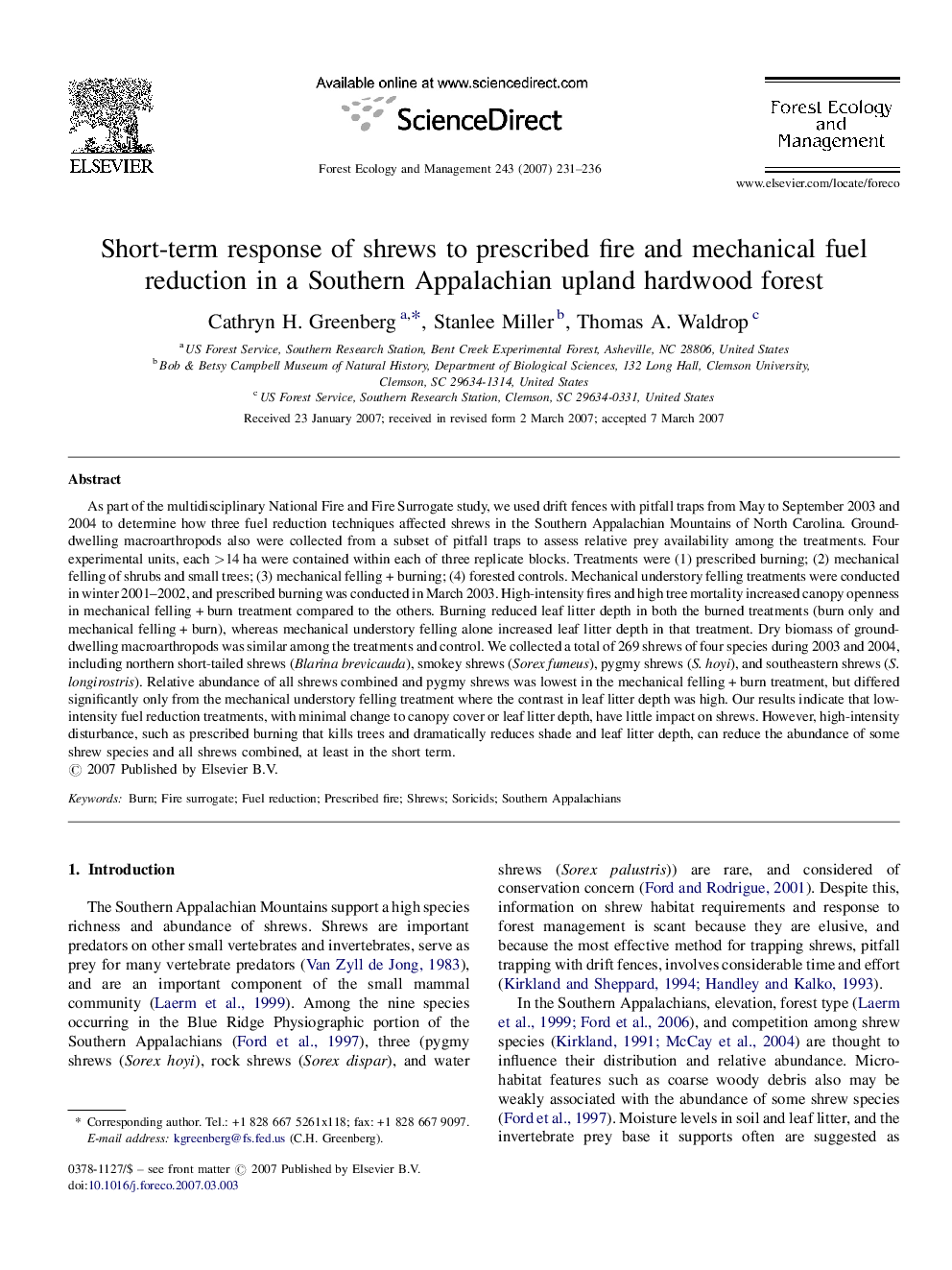| کد مقاله | کد نشریه | سال انتشار | مقاله انگلیسی | نسخه تمام متن |
|---|---|---|---|---|
| 90545 | 159387 | 2007 | 6 صفحه PDF | دانلود رایگان |

As part of the multidisciplinary National Fire and Fire Surrogate study, we used drift fences with pitfall traps from May to September 2003 and 2004 to determine how three fuel reduction techniques affected shrews in the Southern Appalachian Mountains of North Carolina. Ground-dwelling macroarthropods also were collected from a subset of pitfall traps to assess relative prey availability among the treatments. Four experimental units, each >14 ha were contained within each of three replicate blocks. Treatments were (1) prescribed burning; (2) mechanical felling of shrubs and small trees; (3) mechanical felling + burning; (4) forested controls. Mechanical understory felling treatments were conducted in winter 2001–2002, and prescribed burning was conducted in March 2003. High-intensity fires and high tree mortality increased canopy openness in mechanical felling + burn treatment compared to the others. Burning reduced leaf litter depth in both the burned treatments (burn only and mechanical felling + burn), whereas mechanical understory felling alone increased leaf litter depth in that treatment. Dry biomass of ground-dwelling macroarthropods was similar among the treatments and control. We collected a total of 269 shrews of four species during 2003 and 2004, including northern short-tailed shrews (Blarina brevicauda), smokey shrews (Sorex fumeus), pygmy shrews (S. hoyi), and southeastern shrews (S. longirostris). Relative abundance of all shrews combined and pygmy shrews was lowest in the mechanical felling + burn treatment, but differed significantly only from the mechanical understory felling treatment where the contrast in leaf litter depth was high. Our results indicate that low-intensity fuel reduction treatments, with minimal change to canopy cover or leaf litter depth, have little impact on shrews. However, high-intensity disturbance, such as prescribed burning that kills trees and dramatically reduces shade and leaf litter depth, can reduce the abundance of some shrew species and all shrews combined, at least in the short term.
Journal: Forest Ecology and Management - Volume 243, Issues 2–3, 31 May 2007, Pages 231–236